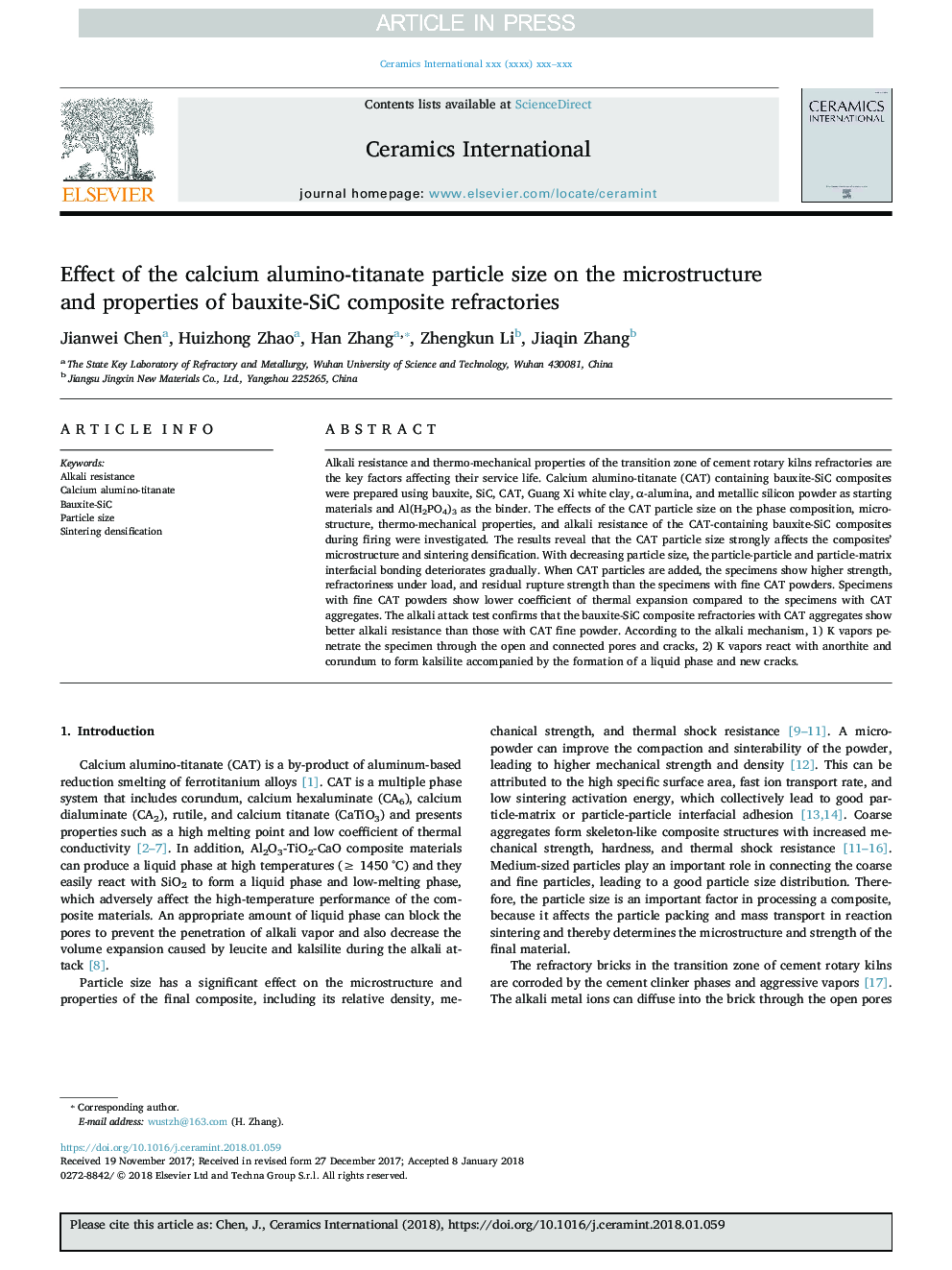| Article ID | Journal | Published Year | Pages | File Type |
|---|---|---|---|---|
| 7887927 | Ceramics International | 2018 | 9 Pages |
Abstract
Alkali resistance and thermo-mechanical properties of the transition zone of cement rotary kilns refractories are the key factors affecting their service life. Calcium alumino-titanate (CAT) containing bauxite-SiC composites were prepared using bauxite, SiC, CAT, Guang Xi white clay, α-alumina, and metallic silicon powder as starting materials and Al(H2PO4)3 as the binder. The effects of the CAT particle size on the phase composition, microstructure, thermo-mechanical properties, and alkali resistance of the CAT-containing bauxite-SiC composites during firing were investigated. The results reveal that the CAT particle size strongly affects the composites' microstructure and sintering densification. With decreasing particle size, the particle-particle and particle-matrix interfacial bonding deteriorates gradually. When CAT particles are added, the specimens show higher strength, refractoriness under load, and residual rupture strength than the specimens with fine CAT powders. Specimens with fine CAT powders show lower coefficient of thermal expansion compared to the specimens with CAT aggregates. The alkali attack test confirms that the bauxite-SiC composite refractories with CAT aggregates show better alkali resistance than those with CAT fine powder. According to the alkali mechanism, 1) K vapors penetrate the specimen through the open and connected pores and cracks, 2) K vapors react with anorthite and corundum to form kalsilite accompanied by the formation of a liquid phase and new cracks.
Related Topics
Physical Sciences and Engineering
Materials Science
Ceramics and Composites
Authors
Jianwei Chen, Huizhong Zhao, Han Zhang, Zhengkun Li, Jiaqin Zhang,
